For International Women's Day, we wanted to highlight some of the women artists that are part of the SPACES Archives! From ceramics to fibers, concrete to paint, enjoy these amazing and immersive works of art these women created using the resources available, transforming the environments they inhabited. Though all of these artists have vastly different experiences, they all have one thing in common: they took their dreams and made the time to make them reality.
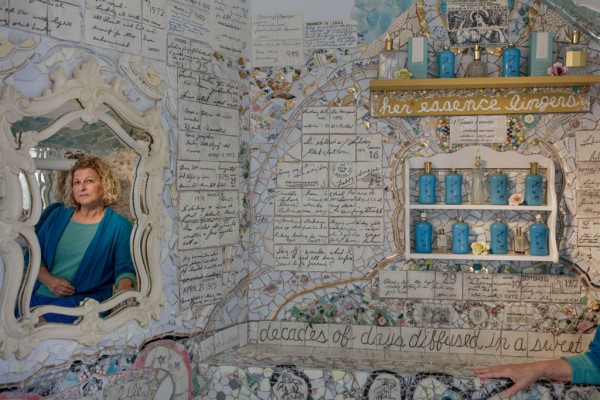
Lindsay Alexander poses in her Ohio home art environment, captured by Fred Scruton.
Lindsey Alexander
Some people keep written diaries, but Lindsey Alexander has taken her personal histories and turned them into grottos that require no key to see. Pieces of wallpaper from former homes, conversations from her parents and musical scores memorialized onto ceramic tiles, clothes, and treasured antique Estée Lauder perfume bottles are just some of the items used in her fantastic art environment. Filled with heirlooms and feminine energy, the environment is highly inspired by the women in her family. “I’m one of five sisters, with two daughters and two granddaughters,” Alexander explains, “so the mother/daughter theme is carried throughout that space.”
More about Lindsey Alexander
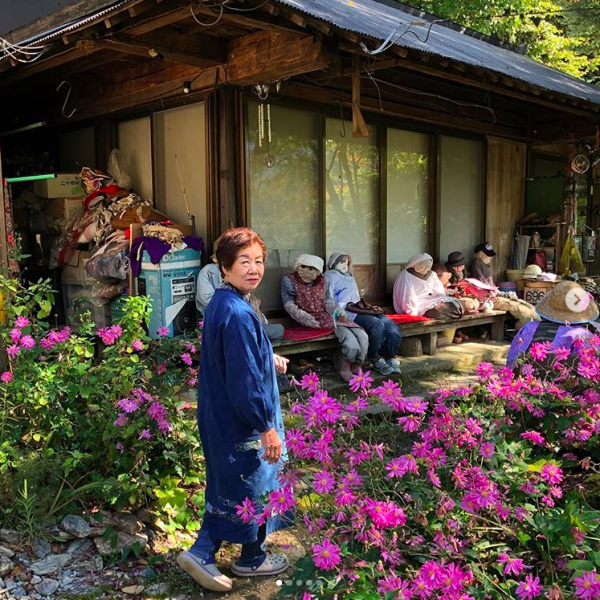
Tsukimi Ayano with some of her "neighbors" in Nagoro, Japan. Image courtesy of Adam H. Graham.
Tsukimi Ayano
While many of the residents of Nagoro, a tiny village on the Japanese island of Shikoku, have either moved away or died, a different population is booming. After living her entire adult life in Osaka (the second largest metropolitan area in Japan), Tsukimi Ayano returned to her childhood home of Nagoro in the early 2000s to care for her elderly father. Ayano attempted to plant a garden at her new-old home, and when birds dug up the seeds, she decided to combat the problem by making a scarecrow in the likeness of her father. Delighted by what she had created, Ayano made several more cloth dolls and installed them near the road where they would be visible to passersby. When travelers stopped and asked one of her creations for directions, she was so tickled that she decided to continue making dolls to repopulate the dwindling village. As of late 2019, Nagoro has less than 30 human residents, but more than 350 dolls made by Ayano occupy the village.
More about Tsukimi Ayano
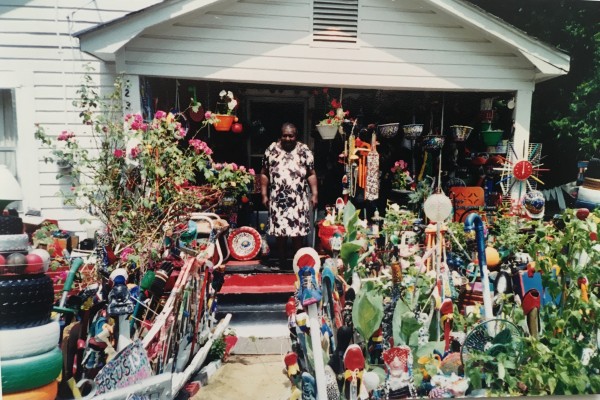
L.V. Hull stands on the porch of her home in Kosciusko, Mississippi. Used with permission of the photographer, Terry Nowell
L.V. Hull
L. V. Hull was an original, a self-taught artist and a lively raconteur. She had a house and yard crowded with her art. Born and raised in McAdams, Mississippi, Hull moved to Kosciusko 35 years ago. Hull began creating her art in 1975. She didn't know why she started: “That amazed me!” But she was thankful, and said she doesn’t know what she would have done without it. She wasn't sure how to teach it, since no one taught her. However, she was certain no one did anything like it, and was proud of having a corner on painted hubcaps and the dots that cover most of her works.
More about L.V. Hull
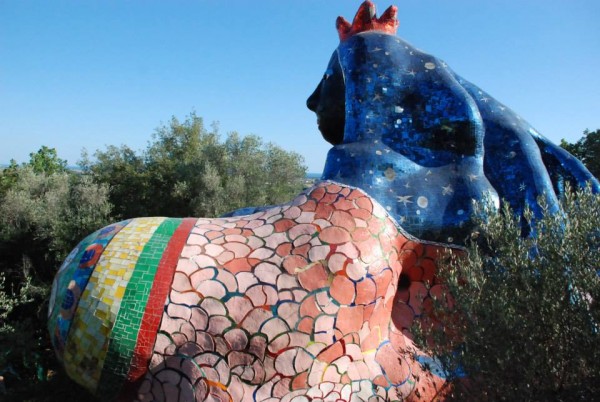
Niki de Saint Phalle's Il Giardino dei Tarocchi (The Tarot Garden) in Capalbio, Toscana, Italy.
Niki de St. Phalle
Niki de Saint Phalle worked on the Tarot Garden for almost thirty years, at a cost of some $11 million in today's dollars. Having grown to encompass two hectares (almost five acres) and dozens of figurative and architectural sculptures, it opened to the public on May 15, 1998. Among the works are images representing the 22 cards of the Tarot deck, fountains, a tower, courtyards, and many fantastical and monumental figures. Although she had returned to the United States in 1994 for health reasons, she continued thinking about adding new components to the Tarot Garden; as late as 2002 she was planning a maze, and land was cleared and the steel foundational rods were installed. But before it could be finished, on May 21, 2002, she passed away, and, per her wishes, her ashes were scattered on-site.
More about Niki de Saint Phalle
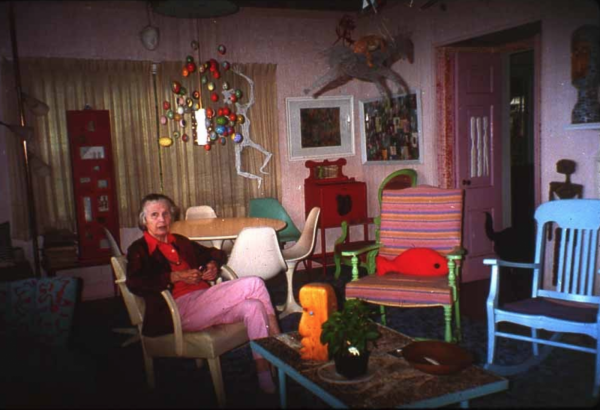
Mary Nohl in her home, surrounded by things she created.
Mary Nohl
From the 1950s until her death in 2001 at age 87, Mary Nohl transformed the yard, the interior, and the exterior of the small lakeside cottage into an expansive work of art that was inspired by her childhood roots in this setting. Sand and stones from the beach were used to mix the concrete that formed the many yard sculptures. Cutout wooden reliefs of fish, swimmers, and boaters created patterns on the house. Pieces of colored glass adhered to the windows produced a colorful light show. Nohl used what was on hand for her artwork, being both resourceful and inspired by the process of making something from the land. All of her endeavors, be it jewelry making and painting during the winter months, or outdoor sculptural work in the summers, emanated out of a direct conversation with this particular site and the great Lake Michigan right outside her door.
More about Mary Nohl
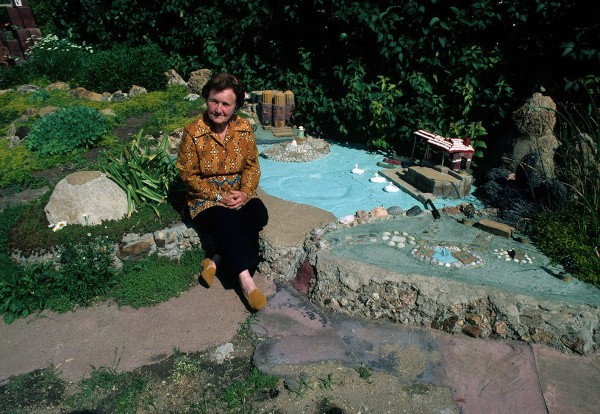
Florence Deeble sits in her rock garden in Lucas, Kansas.
Florence Deeble
Beginning in 1935 and using postcards and drawings, Florence Deeble created miniature scenes of places that she had visited or read about. In 1970, she made concrete recreations of the view from her cabin in Estes Park, Colorado; Longs Peak; Meeker; Lady Washington Mountain; and Pinnacle Mountains, Arizona. All this was an “outlet for my feelings,” said Deeble.
More about Florence Deeble
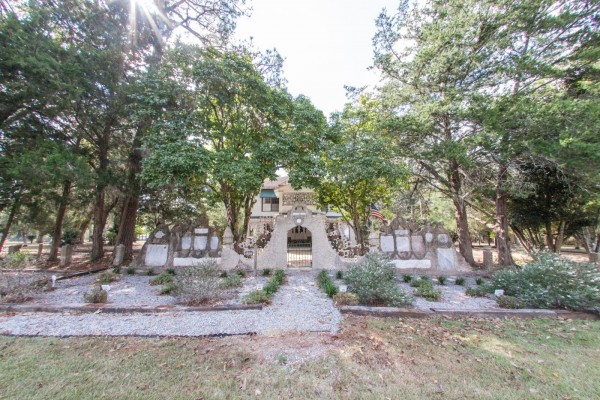
Laura Pope Forester's Museum and Garden in Ochlocknee, Georgia. Image courtesy of Courtney Wahl.
Laura Pope Forester
Between 1900 and her death in 1953, Laura Pope built an extraordinary garden around her antebellum rural residence. The garden comprised more than 200 figurative sculptures, mostly three-dimensional, but others were bas-reliefs or busts set into or topping the walls and the elaborate arched gateway on the periphery of her rural property. Her subjects, mostly “outstanding individuals of fact and fancy” and mostly female, featuring diverse and wide-ranging significant or iconic women (the founder of the Red Cross, Japanese war mothers, spinster schoolteachers, the first woman to successfully sue for divorce in Georgia, the first woman Senator Mrs. W.H. Felton, and Revolutionary War heroine Nancy Hart), but also figures from both sexes from tales and legend, and history.
More about Laura Pope Forester
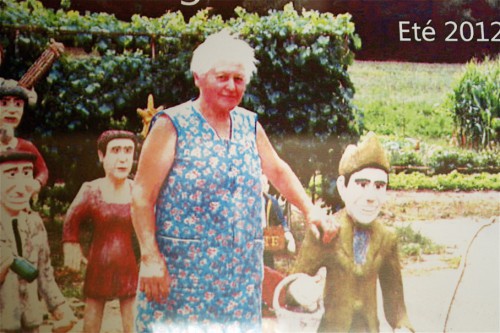
Honorine Burlin stands amongst her concrete statues at her environment in Cintegabelle, Midi-Pyrénées, France. Image courtesy of Jean-Louis Bigou
Honorine Burlin
Burlin began her artistic efforts carving wood, primarily small animals like horses and cows. When she and her husband settled in Cintegabelle, France in 1976, however, she was unable to find the right kind of wood to carve. She tried her hand at plaster, but it dried too fast, so she switched to a cement mortar. Burlin worked on her creations for 25-30 years, spending every moment that wasn’t allotted to her “real” garden and animals. She never made preparatory drawings; when she had an idea, she directly attacked the material, and, according to Julién, during those hours she did not like to be bothered. If she decided she didn’t like the result of her work, she would demolish it completely and start all over.
More about Honorine Burlin
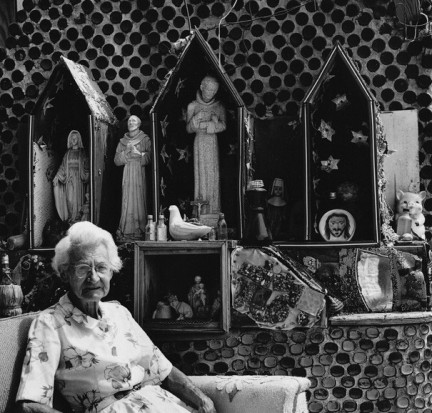
Tressa "Grandma" Prisbrey sits in her art environment in Simi Valley, California. Photo by Seymour Rosen.
Tressa Prisbrey
Asserting that cement blocks were too expensive for the initial retaining wall and storage shed she needed, Prisbrey went to the dump in her Studebaker pickup, and collected the bottles and other discards she would use for building materials. In later years she told visitors she was motivated by the need to house her extensive pencil collection but after she built her “Pencil House,” she continued building, ultimately creating 13 small houses and other structures linked together with colorful mosaic pathways. As she constructed, furnished, and embellished her rooms with findings from the dump, Prisbrey began to cultivate a new identity and became known as “Grandma.” She recited anecdotes and accounts of her premonitions as she escorted guests through her “Bottle Village,” pointing out interesting features, and singing and playing the piano in a structure she called “the Meditation Room.”
More about Tressa Prisbrey
Want to learn about more women art environment builders? Check out these pages!
María Ángeles Fernández Cuesta
Mary Tillman Smith
Helen Martins
Stella Waitzkin
Gail Cottman
Do you have a favorite woman art environment builder?
Tell us in the comments!
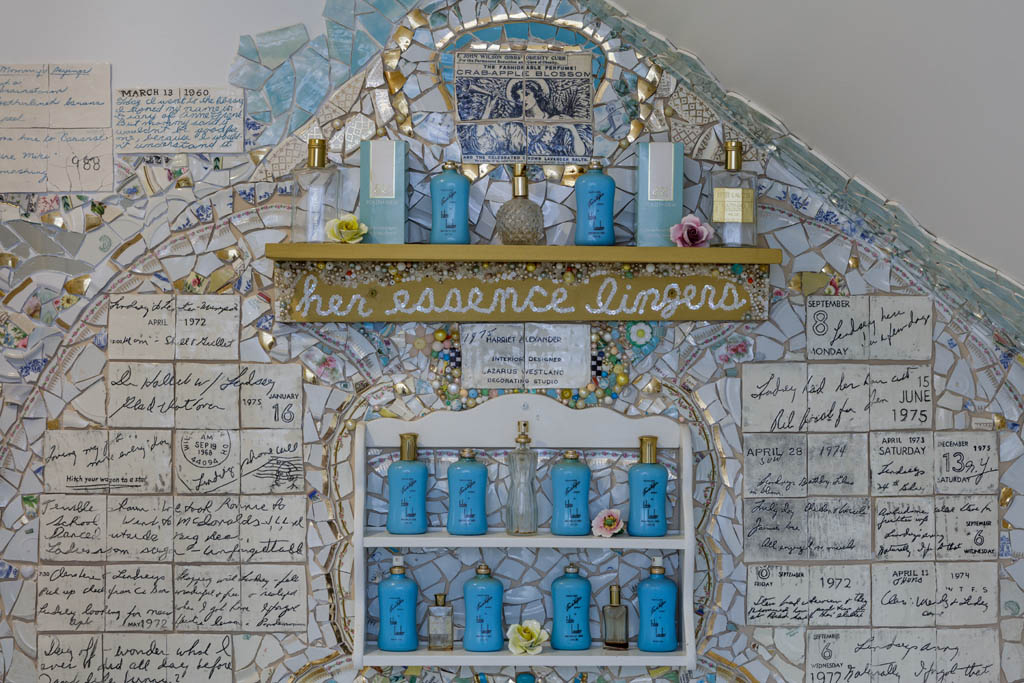

Post your comment
Comments
No one has commented on this page yet.